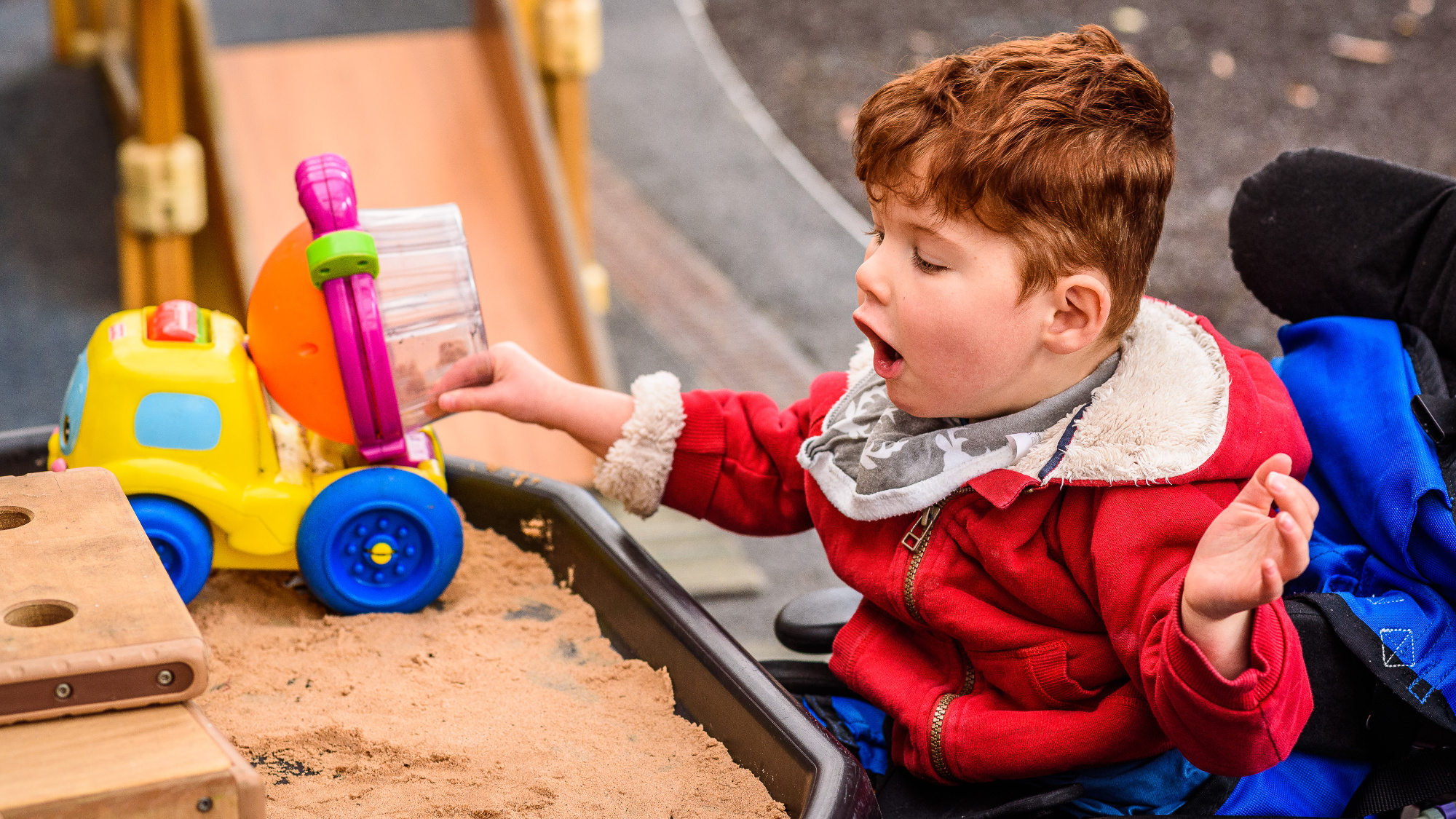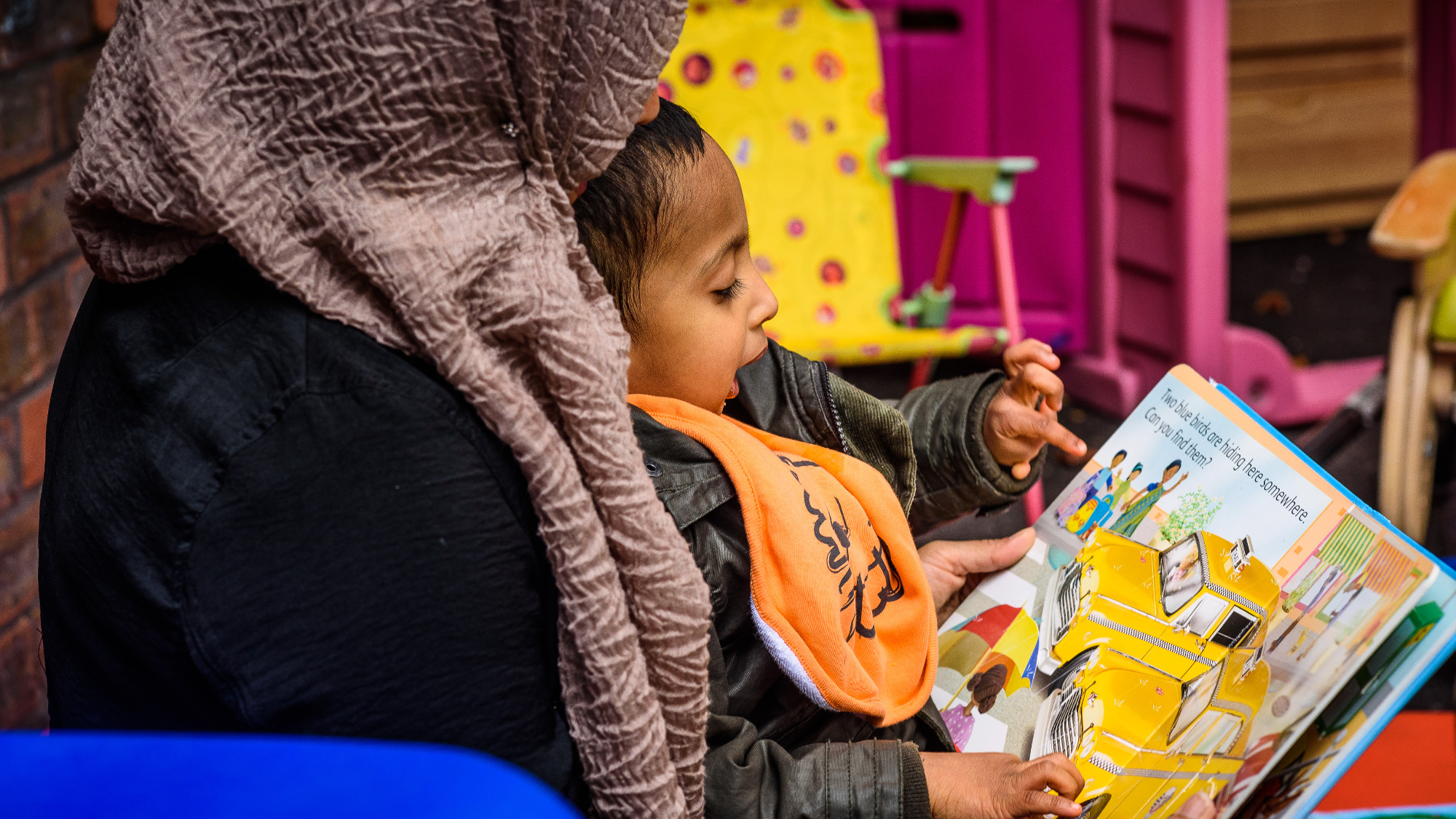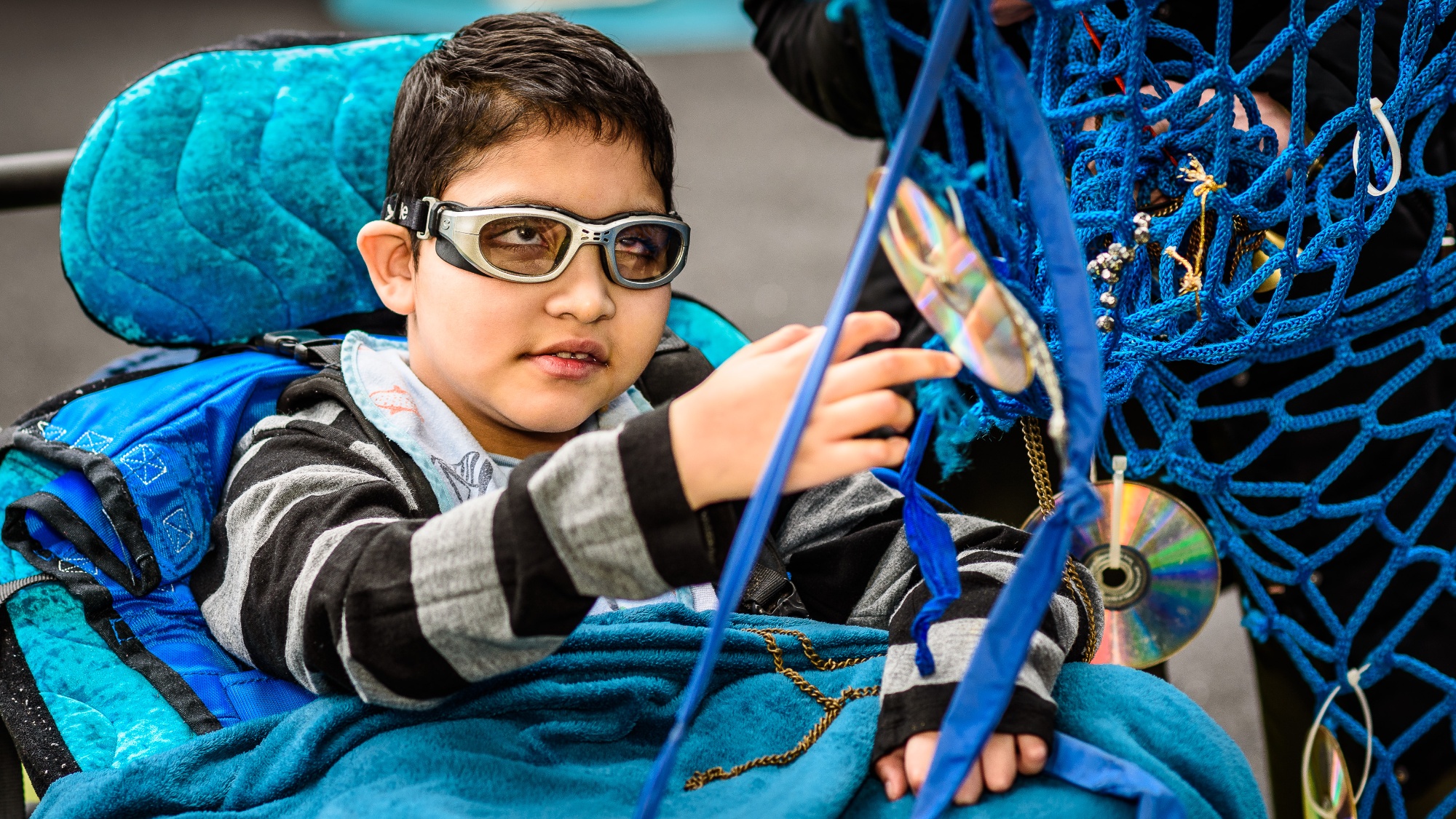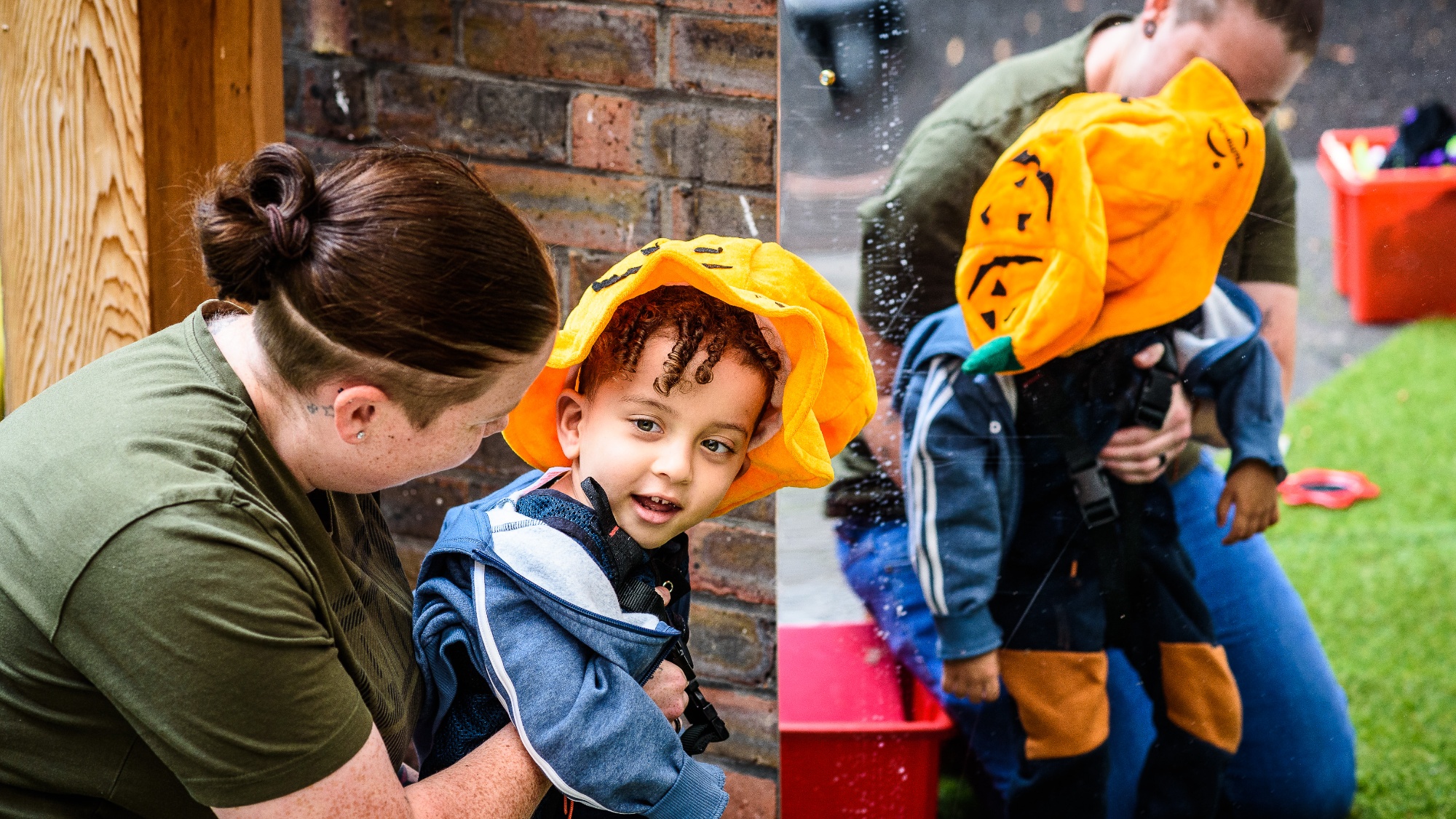Curriculum
At Stephen Hawking school we have two curricula
- The Springboard Curriculum
- Stephen Hawking Curriculum
The content of the Springboard and Stephen Hawking curriculum for pupils with such complex needs was developed through reflecting on the historical perspective of curriculum design, neuro-typical child development information, research, published curriculum materials and curriculum documents from other “outstanding” special schools as well as shared expertise in this area of over 30 years of experience.
Pupils work through the curriculum at a pace matched to their learning characteristics. Teachers differentiate accordingly for the pupils in their class to ensure high quality learning opportunities at all times. The curriculum builds on knowledge and skills which have been attained through prior learning. The curriculum frameworks complement each other and further support the pupils' development throughout their Stephen Hawking journey.
Curriculum - Early Years
The Springboard Curriculum: is a play-based curriculum to support our youngest pupils in the earliest stages of learning and development. The key aspects of the curriculum are to enable pupils and adults to develop trusting relationships which are fun and provide motivating activities to engage and practise skills which will have a positive impact on their learning journey.

Curriculum - Key Stage 1 & 2
- Stephen Hawking School Curriculum: this curriculum builds on the good work started through the Springboard curriculum. It is organised as a continuum of skills, further divided into three levels. The levels are pre-formal, semi-formal and formal. Play continues to be promoted and used as a vehicle of delivery. The key aspects of the curriculum are Engagement and Individualised learning which builds on prior learning.
The pre-formal level has been designed for pupils with Profound and Multiple Learning Difficulties (PMLD) and complex learning styles. Consideration has been given in regards to the National Curriculum subjects and all learning in this level will support pupils to develop skills to access further knowledge and learning as appropriate to the individual. This level intends to deliver learning activities from the pupil’s starting point, rather than from a forced attempt to make what is traditionally offered by schools “accessible”. Six key areas of learning are delivered via a vast array of opportunities. The fundamental structures underpinning this level are the twin pillars of communication and cognition (exploration) (Dr Penny Lacey, Educational Provision for Pupils with Severe and Profound and Multiple Learning Difficulties (Research Report for Mencap). All pupils are learning to communicate, to think and learn. At the pre-formal level, curriculum coverage includes Communication, Language and Literacy, Exploration, Physical development, Personal, Social and Health Education (including self-care and independence), ICT and Discovering my World. All pupils working at this level are learning prerequisite skills to access more complex learning concepts. Teachers may use some subject areas, such as the arts, physical education and the humanities, to provide context for the pupils' learning. These subjects are part of a thematic approach to the curriculum.
We recognise this group of learners are working in the “here and now” and as such need repeated opportunities to practise and revise their learning. It is expected that this group of pupils will require a multi-sensory approach and greater processing time, meaning this group of pupils will require longer periods to demonstrate progress. It is anticipated that most pupils in the pre-formal level will continue to work within this level throughout their time at school.
The semi-formal level has been designed to meet the needs of pupils who have Severe Learning Difficulties (SLD). This group of pupils also require repetition and a consistent approach. They may have spikey learning profiles which means they may work within different levels of the curriculum depending on the content. They may be able to demonstrate learning over time and emerging understanding that symbolic representation carries meaning. This curriculum builds on prior learning which has enabled the pupils to demonstrate skills which facilitate developing relationships with others, effective engagement and understanding of cause and effect. This level of the curriculum teaches through eight main subject areas: Communication, Language and Literacy, Exploration maths, Exploration science, Physical Development, Personal, Social and Emotional Development, Creative arts, Awareness of the World and ICT. It is expected that there will be regular cross curricular teaching that will enable generalisation of skills and knowledge taught. This level is designed to meet the needs of pupils who are working beyond pre-formal frameworks, but who are not yet able to access subject specific learning.
The formal level has been designed for pupils who have less complex learning difficulties and who have established communication systems. Some of these pupils may have a spikey learning profile which means they may need to dip into semi-formal frameworks, but have specific skills in one area. This level allows these pupils to straddle levels and/or use the curriculum in its totality. There are ten subject areas at this level which are taught in more traditional standalone sessions. These are: Literacy; Maths; Science; DT; Art; Music; Humanities; P.E.; Personal, Social and Emotional Development and Computing. These pupils continue to require real objects, modelling and scaffolding of learning as part of a carefully differentiated approach to ensure they acquire new knowledge and skills and are able to generalise these across all areas of learning.

Curriculum - PHONICS & READING
At Stephen Hawking School, we use Twinkl Phonics as our Systematic, Synthetic Phonics (SSP) Program. With a clear, structured progression through the programme, it allows all of our pupils to develop their early listening skills as well as reading and writing skills for those working at a formal level.
The Twinkl Phonics approach combines rigorous progression with engaging learning materials. We believe that children learn best when they are enjoying their learning and that this comes from a mix of bright, fun lesson resources within a clear and systematic approach that builds children’s skills. Broadly speaking, the Twinkl Phonics progression is based on the Letters & Sounds framework, which helps us meet the needs of our children who were previously using that approach.

ASSESSMENT
In addition to the Early Years Foundation Stage and the National Curriculum considerations about breadth, balance and time given to different components in the curriculum, throughout the pupils’ education, their progress and access are continually reviewed and revised. Decisions are influenced by the pupils’ individual needs, drawing on their EHCP, end of key stage and outcomes, review of progress of these at EHCP Reviews and priorities identified in their short term (termly) targets and, where appropriate, Individual Behaviour Plans.
Pupil progress is monitored through observations and learning evaluations alongside Branch Maps and progress towards EHCP outcomes. The Branch Maps monitor progress in Communication, Maths, PSED and Science. We also record and assess progress via Earwig which allows staff and parents to record pupils’ work and wow moments via written records, photographs and videos. Parents are sent weekly snapshots of their child’s work via the Earwig app and can send back comments, photos and videos of their own to add to a timeline of evidence supporting their child’s work. Through this assessment teachers are able to pinpoint pupils’:
- Existing levels of development, knowledge, skills and understanding
- Responses to teaching methods and plans, and their preferred learning style
- Their achievements, strengths and learning needs from which they can prioritise learning, baseline new students and track achievement against teacher predicted progressions.
- Priorities for learning, including where pupils may require outside support, using next steps.
- Individual responses, including those that may indicate progress is taking place, whether planned and targeted or unexpected, evidenced on Earwig using records, Branch maps and EHCP targets (IEP).
- Personal interest and motivation which can support further planning to improve engagement, building on what is important and meaningful to that child.
- Therapeutic needs with strong MDT links.
- Use of resources including staff, settings, other agencies (such as QTVI, QTHI, Sensory OT, EP, etc.) and rooms.
At each stage of the School, attainment and achievement are marked in a variety of ways. These include:
- Branch maps
- Earwig updates and wow moments to parents
- Pupil progress meeting with families
- Annual Reviews of EHCPs
- Good work assembly
- Review of IEP and EHCP targets and outcomes
Senior leaders meet the Teachers termly to look at pupil progress in their classes, we hold parent meetings termly to discuss their child’s progress and targets.

